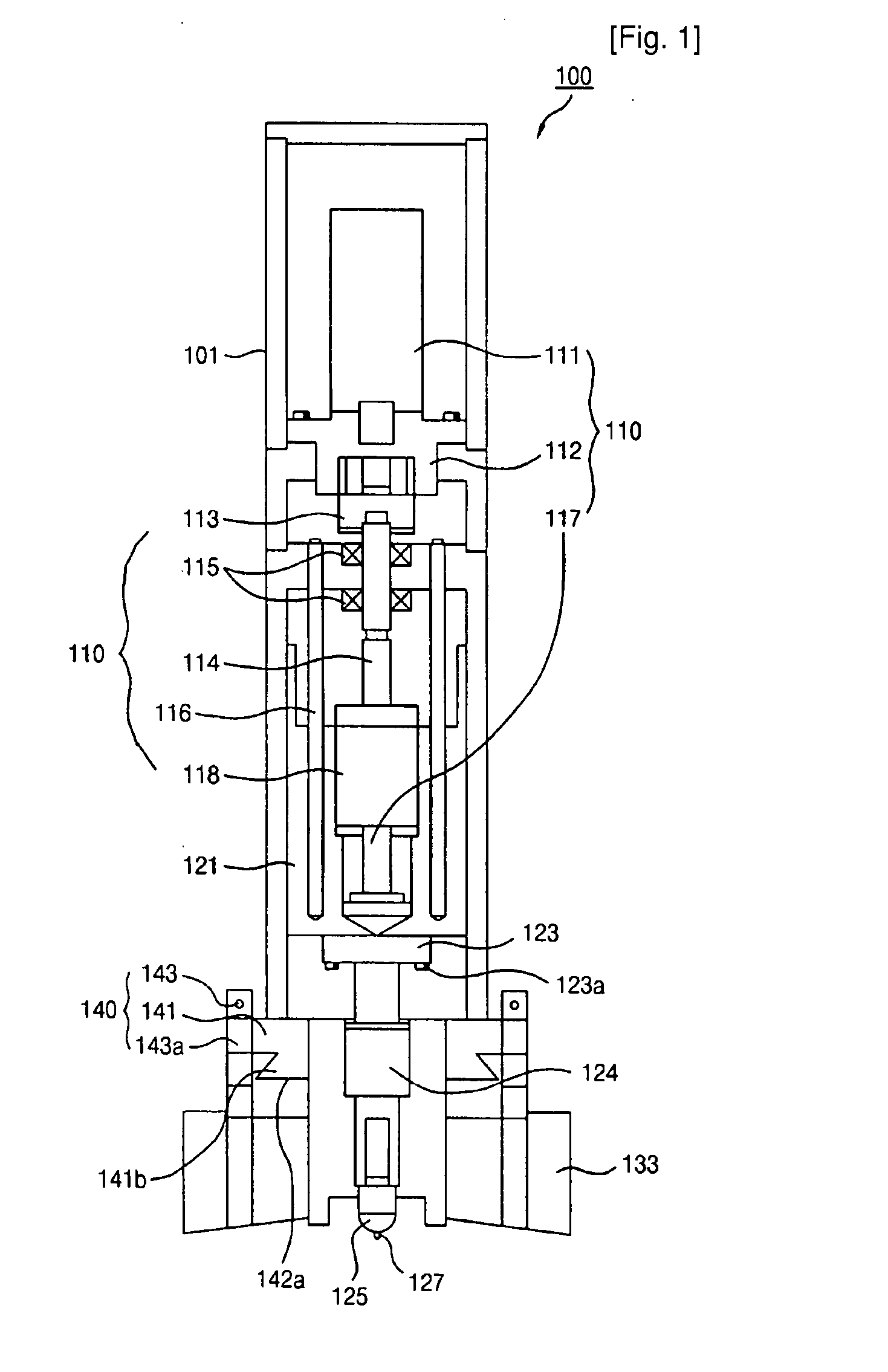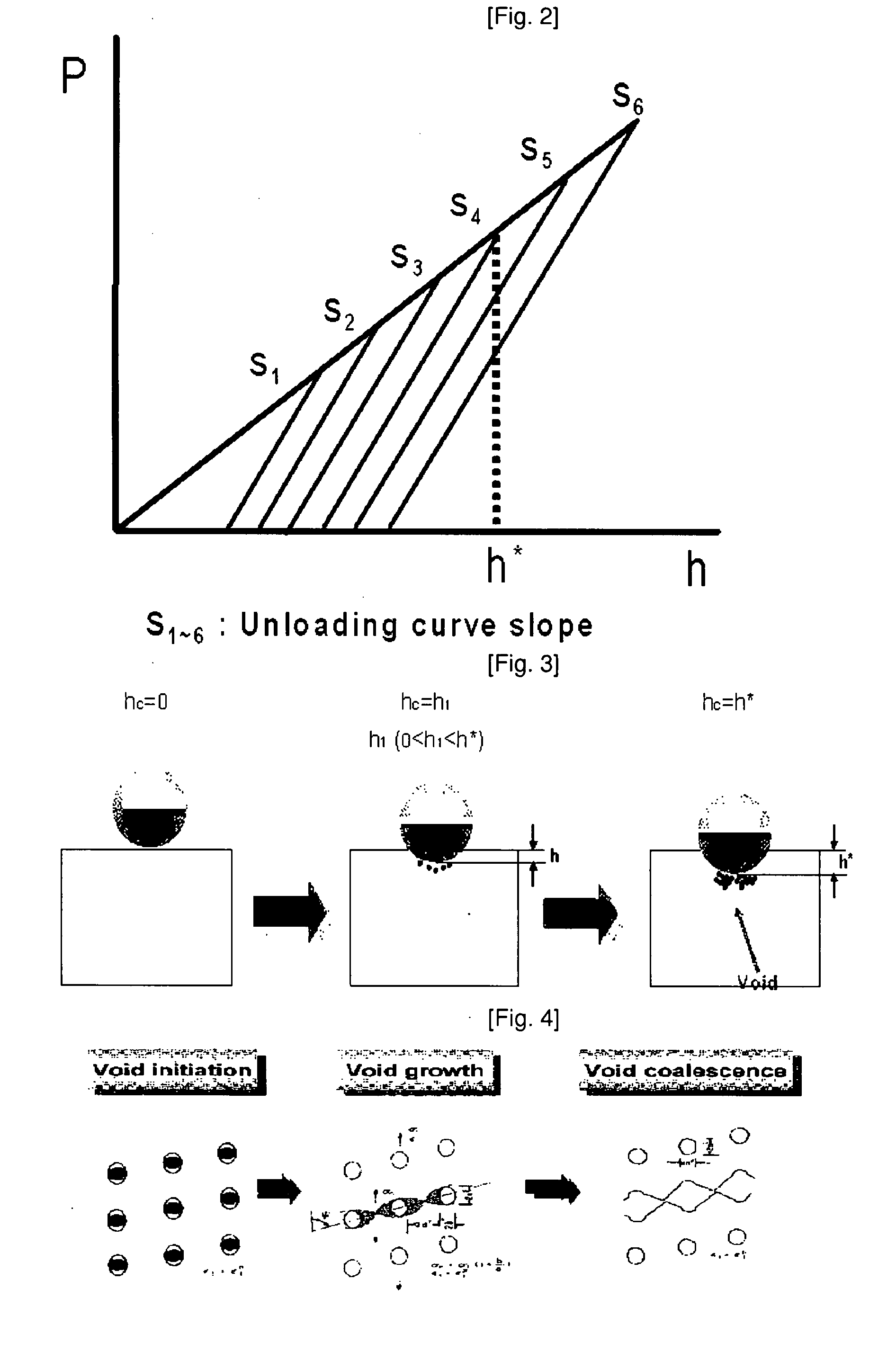Evaluating Method of the Fracture Toughness Using the Continuous Indentation Method
a continuous indentation and fracture toughness technology, applied in the direction of mechanical measuring arrangements, instruments, force/torque/work measurement apparatus, etc., can solve the problems of difficult to evaluate the fracture toughness, use destructive techniques, and conventional methods that cannot be adapted to actively operated industrial structures, etc., to evaluate the properties and fracture toughness of brittle materials, the effect of precisely evaluating the fracture toughness
- Summary
- Abstract
- Description
- Claims
- Application Information
AI Technical Summary
Benefits of technology
Problems solved by technology
Method used
Image
Examples
example 1
If the Type of Material is Known
[0049] In an indentation test, there is no prominent characteristics, such as crack growth, to indicate the fracture of a material, so that the characteristic fracture initiation point (h*) of the indentation depth cannot be measured through a direct method, but the point (h*) can be measured using an optical microscope or a scanning electron microscope. Thus, to determine the characteristic fracture initiation point (h*), the ideas of continuum damage mechanics (CDM) and the critical void volume fraction are adapted to the indentation process.
[0050]FIG. 3 is a view schematically showing the progress of a brittle fracture according to an increase in the void volume fracture (f) during a typical brittle fracture.
[0051] As shown in FIG. 3, when the indentation load is applied to the material, voids are formed in the material. Furthermore, the indentation load applied to the material increases, so that deformation occurs in the material, resulting in ...
example 2
If the Type of Material is Not Known
[0068] In Example 1, the method of evaluating the fracture toughness of a material, whose fracture type is known, has been described.
[0069] However, in the case of a material whose fracture type is not known, it is impossible to previously determine the critical void volume fraction of the material, so that neither the critical elastic modulus nor the characteristic fracture initiation point of the indentation depth may be determined.
[0070] In the above case, the damage parameter (D0.20) and the critical elastic modulus of the material may be determined using the void volume fraction set to 0.20, which is the average of the void volume fractions of the Type-I materials and the Type-II materials.
[0071] Described in detail, the damage parameter (D0.20) is determined by substitution of 0.20 for the void volume fraction (f) in Equation 9 and the critical elastic modulus is calculated. The critical elastic modulus in the above case is represented b...
PUM
| Property | Measurement | Unit |
|---|---|---|
| plastic zone size | aaaaa | aaaaa |
| size | aaaaa | aaaaa |
| fracture toughness | aaaaa | aaaaa |
Abstract
Description
Claims
Application Information
 Login to View More
Login to View More - R&D
- Intellectual Property
- Life Sciences
- Materials
- Tech Scout
- Unparalleled Data Quality
- Higher Quality Content
- 60% Fewer Hallucinations
Browse by: Latest US Patents, China's latest patents, Technical Efficacy Thesaurus, Application Domain, Technology Topic, Popular Technical Reports.
© 2025 PatSnap. All rights reserved.Legal|Privacy policy|Modern Slavery Act Transparency Statement|Sitemap|About US| Contact US: help@patsnap.com



